In a far-off galaxy cluster, we discovered several odd radio emissions. They are forcing us to reevaluate our preconceived notions.
Research Fellow Christopher Riseley from the University of Bologna
Senior research fellow Tessa Vernstrom works at The University of Western Australia.
Galaxy clusters are enormous formations that are piled up at the intersections of the cosmic web and are found all across the cosmos . A single cluster may include hundreds or even thousands of galaxies and measure millions of light-years wide.
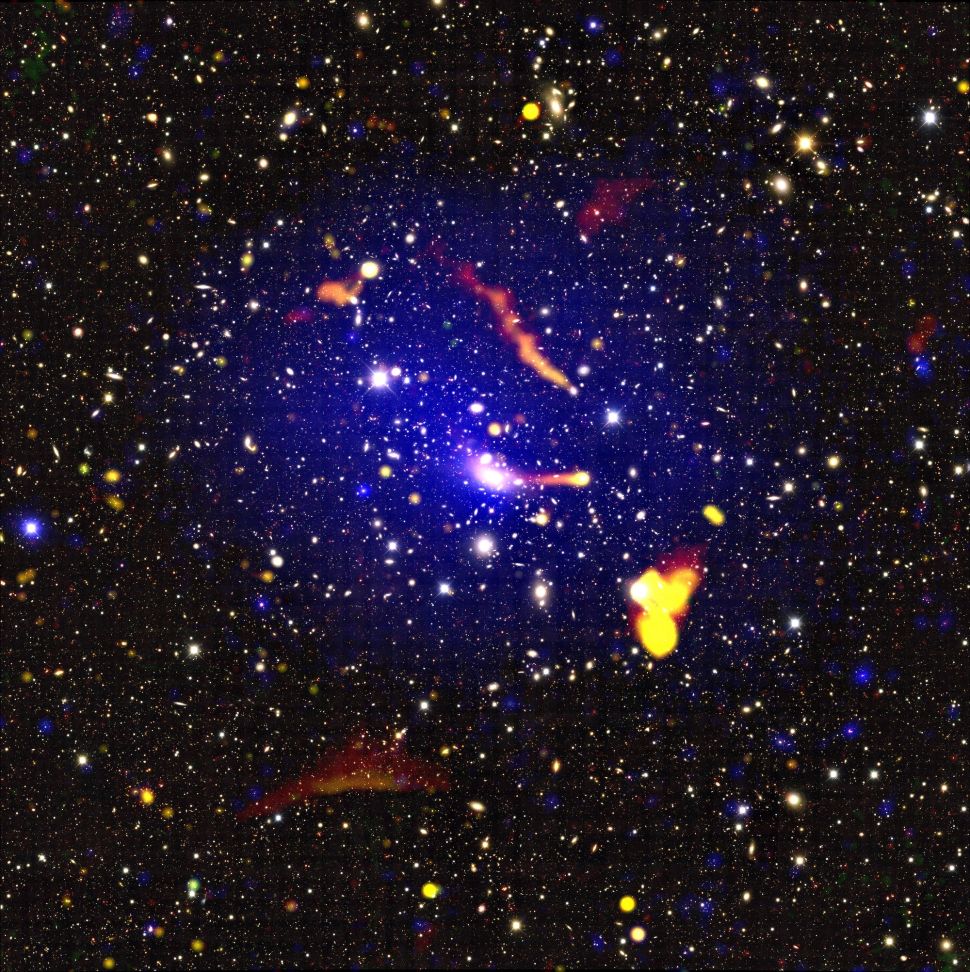
These galaxies only make up a small portion of a cluster’s overall mass, though. The remaining portion is made up of a hot plasma “soup” of gas that has been cooked to temperatures beyond 10,000,000 degrees Celsius and is braided with weak magnetic fields. About 80% of it is dark matter.
In a very active galaxy cluster named Abell 3266, our worldwide team of colleagues and I have discovered a number of seldom seen radio objects, including a radio relic, a radio halo, and fossil radio emission. They contradict preconceived notions about the qualities and the history of such artifacts.
Relics, haloes and fossils
We can examine a wide variety of complex phenomena in galaxy clusters, including magnetism and plasma physics, under settings that are impossible to replicate in a laboratory.
Huge quantities of energy are injected into the particles of the heated plasma during cluster collisions, producing radio emission. And there are different sizes and forms of this emission.
One such is “radio relics.” They have an arc form and are located on the periphery of a cluster. They are energized by shockwaves that go through the plasma and result in a change in density or pressure. The sonic boom that occurs when an airplane surpasses the speed of sound is an illustration of a shockwave on Earth.
Unusual sources called “radio haloes” are located around the cluster’s core. Turbulence in the heated plasma powers them by supplying the particles with energy. Although scientists are aware that collisions between galaxy clusters produce haloes and relics, much of their minute characteristics are still unknown.
Then there are radio sources that are “fossil.” These radio remnants are the result of a supermassive black hole in the radio galaxy’s center dying.
When black holes are active, they launch enormous plasma jets outside of the galaxy itself. The jets start to fade away as they exhaust their fuel and turn off. Radio fossils are what we find to be the relics.
Abell 3266
Our most recent analysis of the Abell 3266 galaxy cluster, which was just published in the Monthly Notices of the Royal Astronomical Society, is in-depth .
This is an 800 million light-year-distance collision system that is exceptionally chaotic and active. It has all the characteristics of a system that ought to have artifacts and haloes, yet none had been seen up until recently.
In order to view Abell 3266 in more detail, we used fresh data from the ASKAP radio telescope and the Australia Telescope Compact Array (ATCA). This study was a follow-up to prior work done using the Murchison Widefield Array .
Our findings reveal a nuanced picture. The leading picture depicts the following: Features where energy input is active are indicated by yellow hues. Hot plasma is represented by the blue haze, which was photographed at X-ray wavelengths.
Redder hues reveal characteristics that can only be seen at lower frequencies. This indicates that these items are more aged and have less vitality. Either they never had much energy to begin with, or they have lost a lot of it over time.
Near the bottom of the picture, the radio artifact may be seen in red (see below for a zoom). And the information we have here reveals certain characteristics that have never been observed in a relic.
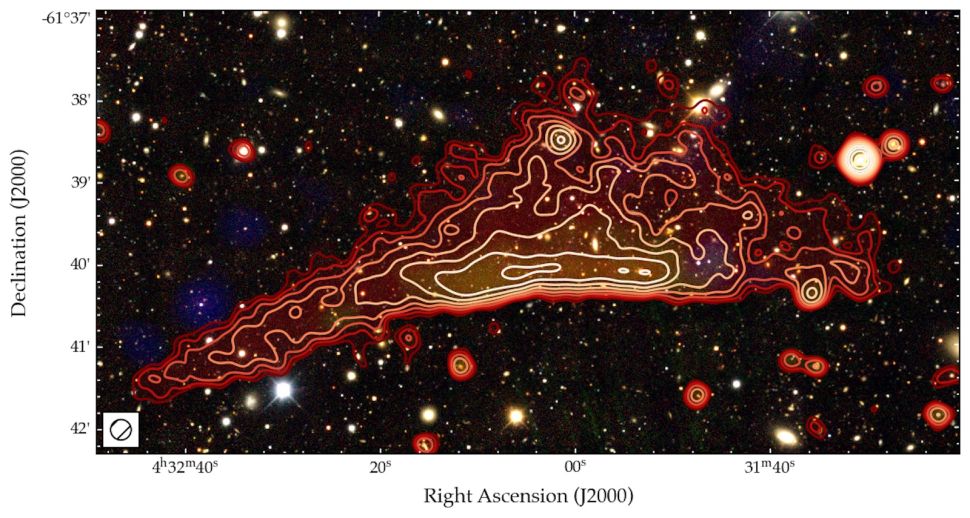
Ancient remnants of a supermassive black hole
The radio fossil can be seen out in the top right corner of the lead image (and also below), and its red color denotes its age. We think that the galaxy at lower left, which has a core black hole that has been dormant for a long time, is where this radio emission first appeared.
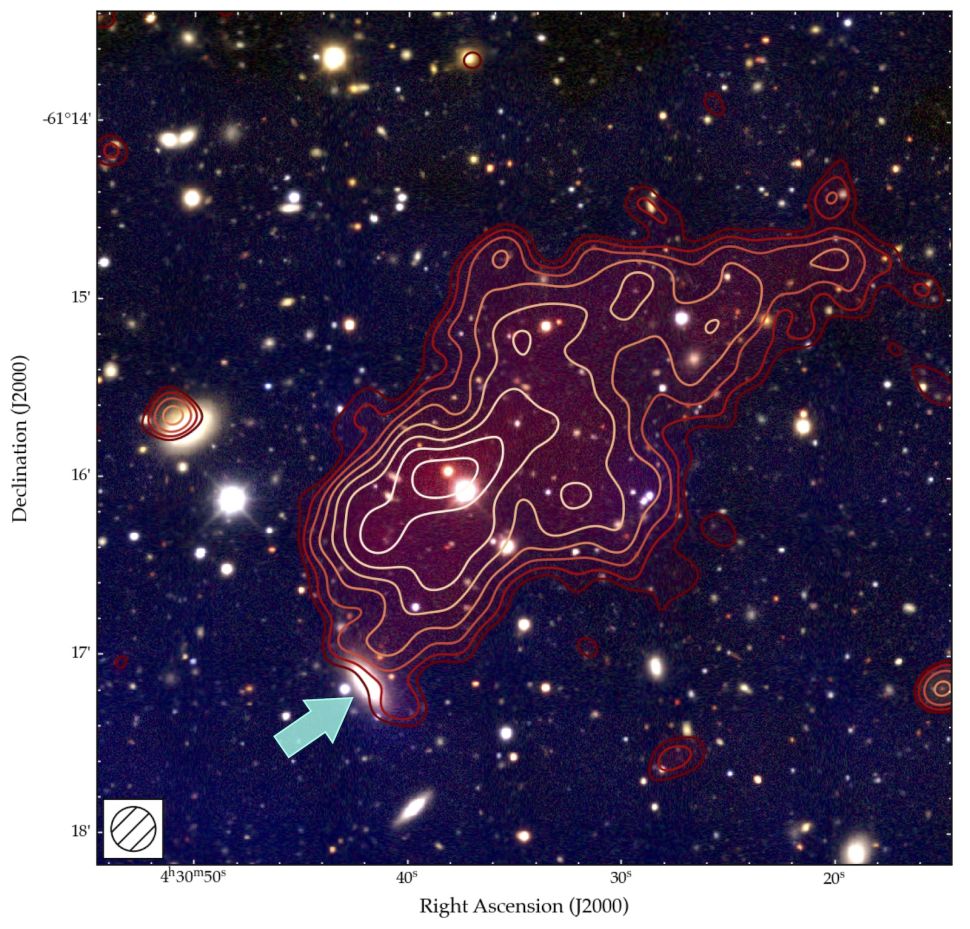
Even the most accurate physical models cannot account for the facts. This indicates areas where we still need to improve in terms of how these sources change.
Finally, we defocused the lead image using a smart method to search for extremely feeble emission that is undetected at high resolution, discovering the first observation of a radio halo in Abell 3266. (see below).
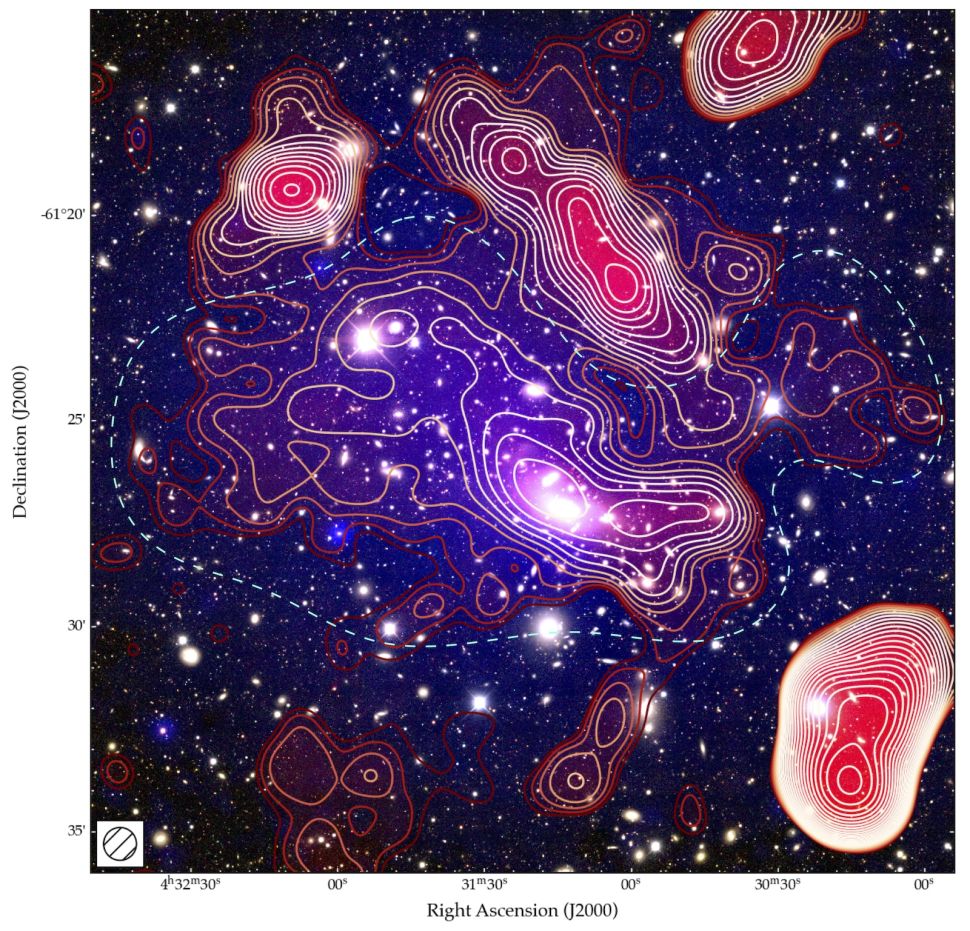
Toward the future
This is the first step on the path to comprehending Abell 3266. Although our research has produced a lot of fresh, in-depth knowledge, additional questions remain.
The telescopes we utilized are helping to set the groundwork for ground-breaking research from the Square Kilometre Array project. Astronomers can learn what we don’t know via research like ours, and you can bet we’ll find out.
We recognize the Wajarri Yamatji people as the traditional owners of the Murchison Radioastronomy Observatory site, where ASKAP and the Murchison Widefield Array are situated, as well as the Gomeroi people as the traditional owners of the site where ATCA is situated.
This article is republished from The Conversation under a Creative Commons license. Read the original article
Do not forget to share your opinion with us to provide you with the best posts !



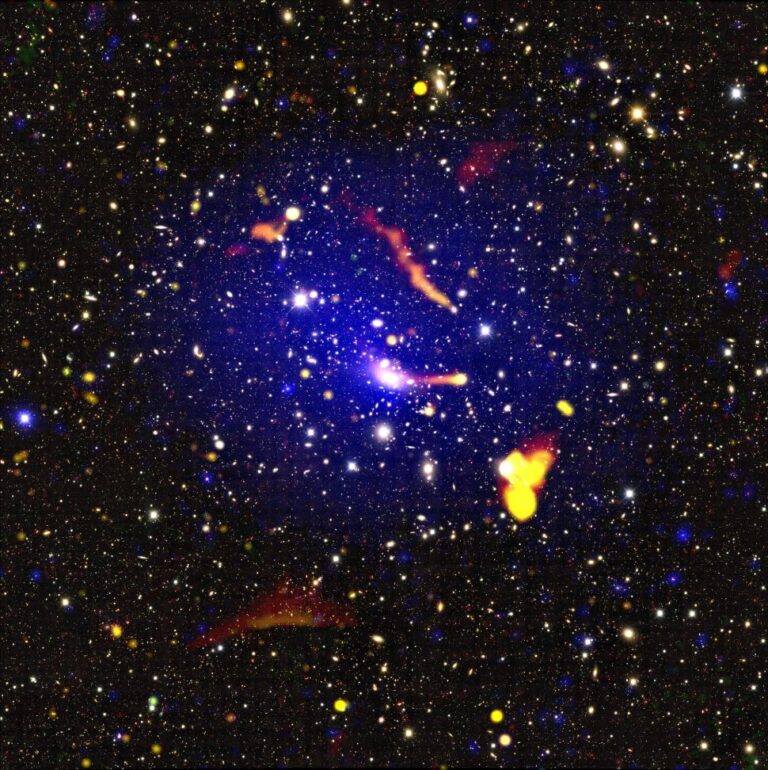
0 Comments